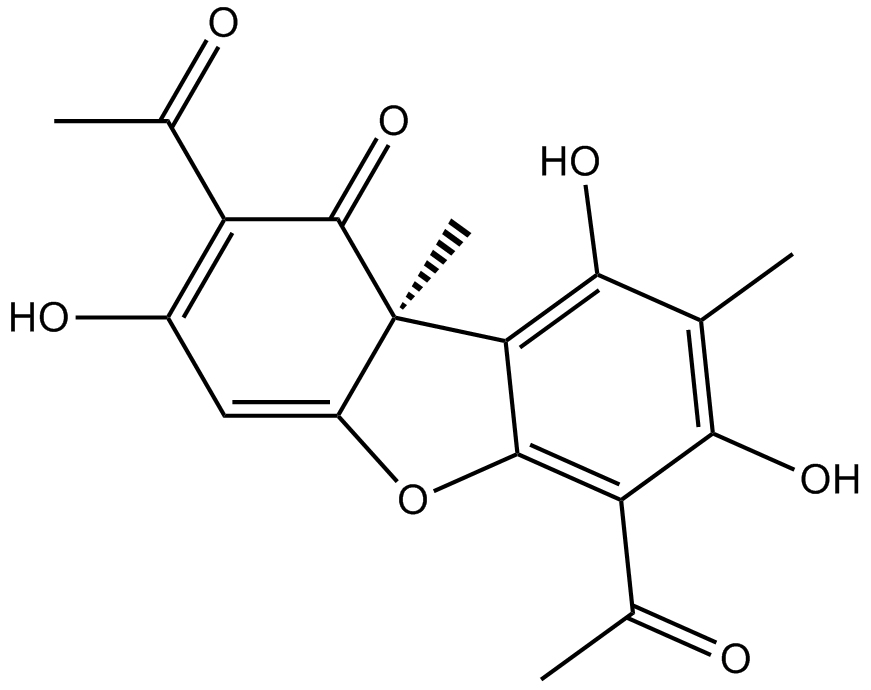(+)-Usniacin |
| カタログ番号GC17330 |
(+)-ウスナイアシンは地衣類から分離され、mTOR の ATP 結合ポケットに結合し、mTORC1/2 活性を阻害します。 (+)-Usniacin は、mTOR 下流エフェクターのリン酸化を阻害します。Akt (Ser473)、4EBP1、S6K は、抗がん活性を備えた自食作用を誘導します。 (+)-ウスナイアシンは、黄色ブドウ球菌、エンテロコッカス・フェカリス、エンテロコッカス・フェシウムを含む多くの浮遊性グラム陽性菌に対する抗菌活性を持っています。
Products are for research use only. Not for human use. We do not sell to patients.

Cas No.: 7562-61-0
Sample solution is provided at 25 µL, 10mM.
MIC: 0.05 μg/62.5 μl to 3.1 μg/62.5 μl
Microorganisms can colonize a wide variety of medical devices, putting patients at risk for systemic and local infectious complications, including local-site infections, endocarditis, and catheter-related bloodstream infections. (+)-Usniacin is a secondary lichen metabolite that possesses antimicrobial activity against various planktonic gram-positive bacteria.
In vitro: (+)-Usniacin showed antimicrobial activity against the same microorganisms as that of acetone extract. Among the three analogues it was the most active one having quite low MIC values. Furthermore, (+)-Usniacin did not show any activity against A. hydrophila and B. cereus whereas (D)-usnic acid did. On the other hand, (+)-Usniacin was active against Y. enterocolitica whereas (D)-usnic acid was not active [1].
In vivo: No animal in-vivo study has been reproted so far.
Clinical trials: Trials carried out in volunteers showed that mouth-rinse with (+)-Usniacin preparations exerted a selective and long lasting action against S. mutans. The adherence of S. mutans to smooth surfaces was not increased by the presence of subinhibiting concentrations of (+)-Usniacin. These characteristics make (+)-Usniacin a suitable candidate for topical use in oral medicine [2].
References:
[1] Tay T, Türk AO, Yilmaz M, Türk H, Kivanç M. Evaluation of the antimicrobial activity of the acetone extract of the lichen Ramalina farinacea and its (+)-usnic acid, norstictic acid, and protocetraric acid constituents. Z Naturforsch C. 2004 May-Jun;59(5-6):384-8.
[2] Ghione M, Parrello D, Grasso L. Usnic acid revisited, its activity on oral flora. Chemioterapia. 1988 Oct;7(5):302-5.
Average Rating: 5 (Based on Reviews and 31 reference(s) in Google Scholar.)
GLPBIO products are for RESEARCH USE ONLY. Please make sure your review or question is research based.
Required fields are marked with *




















